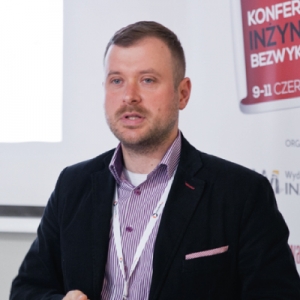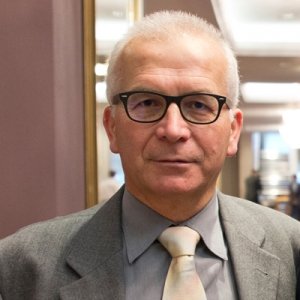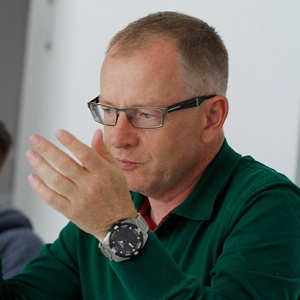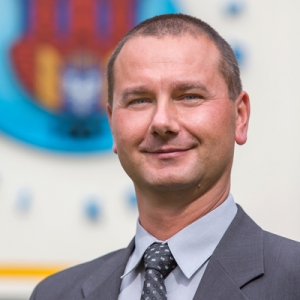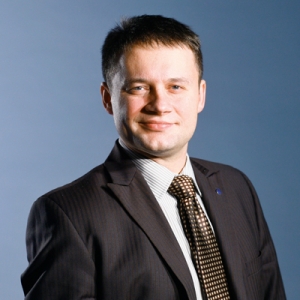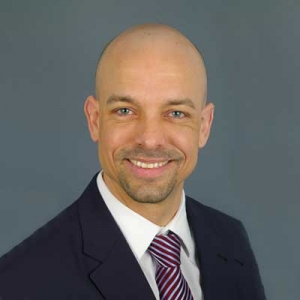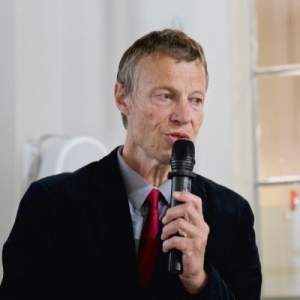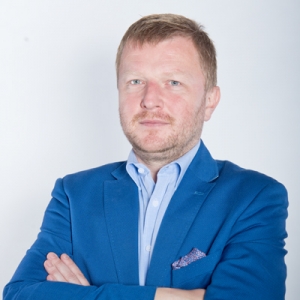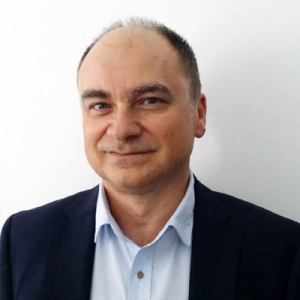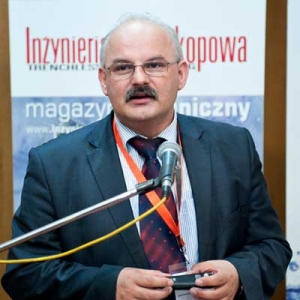Speakers
The calculation model and selection of the strength parameters of the CIPP liner – guidelines DWA-A 143-2
Speech deals with the issues of selection suitable boundary conditions for a technical condition of the pipeline. Properly set output parameters determine the course of the design process and the relevance of the solution – in this case the appropriate CIPP liner. The leading issue is to analyze the process of determining the strength characteristics which is basis on the guidelines DWA-A 143-2. The main stage of the design process is to analyze the stability of the pipeline-lining CIPP. The basic condition which allow appropriate selection of parameters is proper assessment of the pipe technical condition. Properly executed project should ensure optimization of both the economic and construction of the proposed solution.
dr inż. Tomasz Abel, Politechnika Wrocławska
Graduated from the Department of Civil Engineering, Wroclaw University of Technology. His doctoral thesis, dedicated to the strength properties of pipelines renovated using trenchless technology, was published in 2011. Currently an assistant professor in the Department of Structural Mechanics and Municipal Engineering, Wroclaw University of Technology. He is a specialist in the use of trenchless technology in pipelines’ construction and renovation.
PAPER 1.: Sewerage rehabilitation with UV-cured lining. Equipment evolution in the last decade
The recent decade has seen an intense progress in the development of the equipment for installation of UV-cured lining materials. It is also in line with the expectations of customers and investors who are increasingly turning to this technology. In 2006, the largest diameters of UF-cured sleeves offered by suppliers as a standard were up to 1,200 mm,while now installations of 1,800 mm in diameter are known. What else has changed in the recent years?
PAPER 2.: Repair of drainage wells using the UV light-cured linners
Michał Andrzejewski, Gamm-Bud. sp. z o.o.
He graduated from the Szczecin University of Technology, Department of Economics and Transport. Since 1986 he runs his own company, and since 1992 he is a board director of the Gamm-Bud sp. z o. o. company. The company is engaged in delivery of equipment and technologies for water, sewerage and telecommunications sector. He is the author of over 50 publications, co-author of the book. In addition, he is a constructor.
The water supply and sewerage company as a non- commercial contractor of sewer repairs in the CIPP technology using the liners impregnated with epoxy resins
The author of this paper will present insights on their own and non-commercial contracting for sewersrenovation works in the CIPP technology, realized by the native water supply and sewerage companies. The study covers technological and organizational aspects of installing the liners impregnated with epoxy resins, carried out independently by the Polish water companies.
Mirosław Cecuga, Sezam Instal
PARTICIPANT OF DISCUSSION PANEL: Quality control of the CIPP renovation projects in terms of achieving the expected durability and rationality of the investment. Standard requirements, practice, common problems on the building site, model solutions.
Main issuess:
- the features Of CIPP;
- the CIPP rehabilitation study preparation;
- the standard requirements for CIPP technology;
- sampling linners, evaluation;
- test standards and their technical conditions;
- assessment of the linner installation in the pipe on the grounds of TV inspection;
- what and how you can explore in the field of mechanical and utility parameters?
- description of a typical "domestic" CIPPproject;
- description of model solutions for CIPP technology quality control;
- examples of "recommended" specifications records.
Grzegorz Cyganik, Miejskie Przedsiębiorstwo Wodociągów i Kanalizacji S.A.
PARTICIPANT OF DISCUSSION PANEL: Quality control of the CIPP renovation projects in terms of achieving the expected durability and rationality of the investment. Standard requirements, practice, common problems on the building site, model solutions.
Main issuess:
- the features Of CIPP;
- the CIPP rehabilitation study preparation;
- the standard requirements for CIPP technology;
- sampling linners, evaluation;
- test standards and their technical conditions;
- assessment of the linner installation in the pipe on the grounds of TV inspection;
- what and how you can explore in the field of mechanical and utility parameters?
- description of a typical "domestic" CIPPproject;
- description of model solutions for CIPP technology quality control;
- examples of "recommended" specifications records.
Tomasz Daniłoś, BLEJKAN S.A.
CIPP in Poland and Europe
CIPP is the most important rehabilitation technology for sewer systems worldwide. This is due to the flexibility of the half-fabricated product, which is finished on site while using different hardening methods.
The market situation in European countries differs. The technology is highly used in central, western and eastern Europe; highly developed markets are Germany, France, BENELUX, Poland and Czechoslovakia.
Approximately 2 000 000 km of public sewers are laid in the grounds of Europe. And with an estimated damage rate of minimum 20% about 400 000 km have to be renewed.
Let’s have a closer look on some markets like Germany, France, Poland, Czech Republic and Slovakia.
Gunter Kaltenhäuser, RELINEEUROPE AG
1994–2001: civil engineer university Bochum: specialized in waste water and pipe/sewer rehabilitation.
2001–2007: IKT – Institute for Underground Infrastructure, Gelsenkirchen: research, tests, consulting all around pipe/sewer rehabilitation.
2007–2014 MC-Bauchemie, Bottrop, world leading company in construction chemicals/ protection technologies: sales manager Europe, department for the rehabilitation of underground infrastructures.
April, 2014: RELINEEUROPE AG, Rohrbach, world leading company in UV-CIPP and UV-technology for the rehabilitation of pipe/sewer systems: managing director sales and marketing..
Development of the sewers rehabilitation technology using the CIPP linners
PARTICIPANT OF DISCUSSION PANEL: Quality control of the CIPP renovation projects in terms of achieving the expected durability and rationality of the investment. Standard requirements, practice, common problems on the building site, model solutions
dr inż. Andrzej Kolonko, Politechnika Wrocławska
DISCUSSION PANEL: Quality control of the CIPP renovation projects in terms of achieving the expected durability and rationality of the investment. Standard requirements, practice, common problems on the building site, model solutions.
Main issuess:
- the features Of CIPP;
- the CIPP rehabilitation study preparation;
- the standard requirements for CIPP technology;
- sampling linners, evaluation;
- test standards and their technical conditions;
- assessment of the linner installation in the pipe on the grounds of TV inspection;
- what and how you can explore in the field of mechanical and utility parameters?
- description of a typical "domestic" CIPPproject;
- description of model solutions for CIPP technology quality control;
- examples of "recommended" specifications records.
Participants: 
Moderator: Paweł Kośmider, Wydawnictwo INŻYNIERIA sp. z o.o.
The main differences in terms of liners’ dimensioning according to the guidelines ATV-M 127-2, 2000 and DWA-A 143-2, 2015
After 15 years after the releases guidelines ATV-M 127-2, a German technical organization DWA decided to replace it with the new study, designated as a guideline DWA-A 143-2. Keeping the main principles of the computational approach, the new guidelines have a number of differences, which are worth to discuss due to the high popularity of the older studies. The conversance of the previous guidelines may help to solve the cases previously. Or it can give the effect in more precise calculation results, leading ultimately to make savings, e.g. due to the thickness of the liner.
dr inż. Bogdan Przybyła, Politechnika Wrocławska
Graduated from the Department of Civil Engineering, Wroclaw University of Technology. His doctoral thesis, dedicated to the evaluation and development of sewer lines construction in terms of reliability theory. He participated in research internships at universities in Germany (Technische Unversität Dresden i Technische Hochschule w Münster). Currently an assistant professor in the Department of Structural Mechanics and Municipal Engineering, Wroclaw University of Technology. He is a specialist in the technical condition assessment and rehabilitation of water pipes and sewage systems; an author of expertise works and numerous scientific and technical publications.
Standardization of rehabilitation works acceptance in the context of CIPP technology
PARTICIPANT OF DISCUSSION PANEL: Quality control of the CIPP renovation projects in terms of achieving the expected durability and rationality of the investment. Standard requirements, practice, common problems on the building site, model solutions.
dr Inż. Dariusz Zwierzchowski, Centrum Badań i Certyfikacji sp. z o.o.

